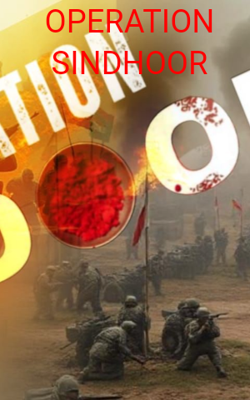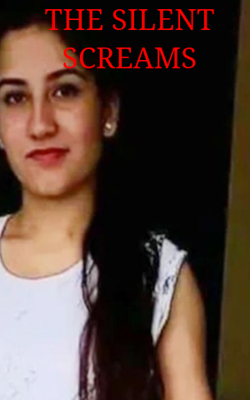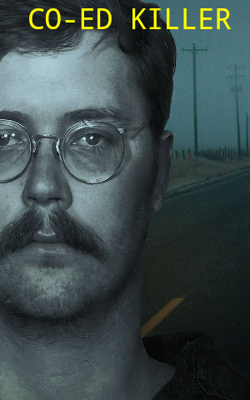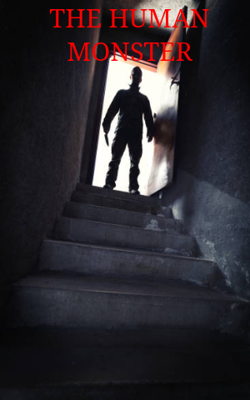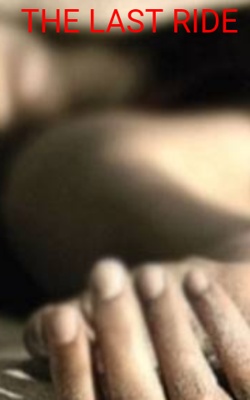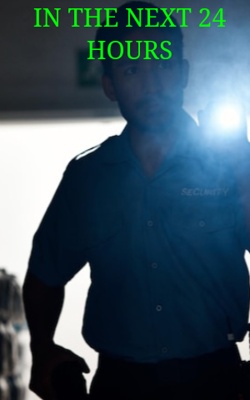The Fatal Encounters
The Fatal Encounters


NOTE: This story is based on Author’s fiction. It doesn’t apply to any historical references or real-life incidents. It’s the first story of my planned “Naxalites series.” It’s a hyperlink story, explained in six parts.
28 SEPTEMBER 2022
COIMBATORE DISTRICT
Siva Suryan, a PG student doing his course on Journalism and Mass Telecommunication comes across the news of Fatal encounters, that happened in Tamil Nadu during the regime of M.G.Ramachandran. Inspired with the one-line of the newspaper, he decides to meet up the retired police officers, who handled the case. With the help of his family friend, he goes to Jolarpet, where he meets a 56-year-old retired constable Rajalingam.
As he asked about the fatal encounters and Naxalites, Rajalingam starts to narrate the events, that happened during the 1980’s.
PART 1: THE POLICE VERSION
SEPTEMBER 18, 1980
Following the carte blanche given to the police by the M.G.Ramachandran(MGR) government in Tamil Nadu two months ago, seven alleged Naxalites were killed in so-called encounters. And the police lost three of it’s personnel in a mysterious bomb blast. The anti-naxalite operation launched by the Tamil Nadu police is reminiscent of what their counterpart in Andhra Pradesh did a decade ago, resulting in the death of over 370 people, ranging in age from 11 to 70, with no toll on the police side.
The police version in each of these encounters reads like a crime-thriller of a low order. The latest victim was 25-year old Kuruvikaran Kanakaraj, who had an encounter with the police on September 18. A police party led by a senior officer of the “Q” branch, CID, apprehended Kanakaraj at Kalkathiyoor village near Jolarpet, in North Arcot district.
Two policemen have grappled with Kanakaraj who used “several methods of physical combat, besides biting the constables” to resist arrest, whereupon he was shot because they were afraid the man might throw a bomb at them. Doctors at the Vellore hospital declared him dead. The encounter immediately preceding this one, which took place exactly a week earlier, was revealing.
PART 2: DRAMATIC ENCOUNTER
Though described as a dramatic encounter, there is a singular lack of drama in these sordid killings. The raiding party led by an additional superintendent of police found two hard core Naxalites sitting on a bench by the roadside and the additional superintendent fired shots at close range, killing the two. One of the dead was identified as Subramaniam. The other person’s identity, the police could not establish immediately, but they were sure the victim was a hard-core Naxalite. Later in the evening, the police gave out the name of the second victim as Shanmugham, a Naxalite.
PART 3: PRE-DAWN SWOOP
Even more intriguing is the death of Balan, a 29-year old university graduate described by the police as a Naxalite leader. Hailing from Kumarasamipatti village in Dharmapuri district, Balan and 15 others were claimed to have been arrested by the police in a pre-dawn swoop on September 7, and that was when Balan sustained a fracture in his left leg in the encounter. He was admitted to the General Hospital in Madras when he died on September 12. Doctors attributed his death to “septicemic shock.”
Balan, leader of the Agricultural Laborer’s Association was in fact seen by hundreds of people addressing a meeting at Seeriampatti village on September 6, the day after his encounter with the police and arrest. What is more surprising, the police had given permission for the meeting Balan was addressing. He was surrounded by the police at the rostrum and told that he was under arrest. When he asked for the arrest warrant, the police did not have it. He was forcibly taken away. An hour later, he was seen being taken to the Dharmapuri hospital on a stretcher. At the advice of the local doctors, he was removed to the Madras hospital where he died six days later.
For sheer police inventiveness, the August 6 encounter at Yelagiri village near Tirupathur takes the prize. It was a remarkable encounter in every sense of the word. In a pre-dawn raid of the village in search of Pachaippan alias Iruttu for the murder of Natesa Nainar of Kadirampatti village, the police stumbled on a “rich harvest of Naxalites.”
The police which went in an ambassador car, in it’s anxiety to get the catch of five “Wanted men” to the station as early as possible, made only a cursory search of the persons, shoved them in the leg space of the rear seat with three armed police men resting their legs on the backs of the fugitives whose hands were tied to their back and drove on.
The front seat was occupied by an inspector, a constable and the driver, armed to the teeth. It was 4:30 in the morning. The drive from Yelagiri to Tirupathur town, a distance of seven kilometers, apparently took two full hours. As the car neared the Tirupathur police station, at 6:30 AM to be exact, a bomb exploded, resulting in the death of four, three police personnel and one of the captives.
PRESENT
Siva Suryan is terribly shocked upon hearing this. He questioned: “Sir. Didn’t the government take actions against these atrocities?”
Keeping a news about Ajantha, Rajalingam asked Suryan to read the news. He reads: “36 years later, Operation Ajantha scores with court verdict against naxal.” Now, he starts narrating about Operation Ajantha to Siva Suryan.
PART 4: OPERATION AJANTHA
A day after Jolarpet Inspector of police V. Palanisamy and two head constables of Tamil Nadu Special police were killed in August 1980 in a Naxal bomb attack, the anti-Naxal operation gained political will to weed out the rebels from in and around Tirupattur and Jolarpet areas in Vellore district.
The then chief Minister M.G.Ramachandran, who took part in the funeral of the police inspector held in Katpadi near Vellore, decided to honor him by naming the intensified anti-Naxal operation after Palanisamy’s six-year old daughter Ajantha.
The DIG took initiative to build a memorial for the police personnel in Tirupattur town in 1981. Since then, the police department has been observing their death anniversary to mark the conclusion of Operation Ajantha and to pay tributes to the matyrs.
PART 5: FEAT
One of the five rounded up at Yelagiri and shoved into the car was Shivalingam, a wanted Naxalite leaders, who was hiding the bomb in his undergarments. Just as the car was nearing the police station, he pulled out the bomb, activated it and threw it on the front seat. While it was an extraordinary feat on the part of the police to accommodate five hefty men in the leg space of the rear seat of an ambassador car, it was even more daring for a gagged man to extricate a hidden bomb from his neither garments and explode it when being guarded by armed policemen.
People of Yelagiri village, were emphatic that the police took only three persons into custody: Perumal, one of the accused in the Nainar Murder case, Selvam, a teenager in whose house Perumal had taken shelter, and Rajappa, a beedi worker who lived in the adjacent house. A bomb did explode as the car was nearing the Tirupathur police station, whether it was thrown from outside or set off from inside, no one seems to know for sure.
The explosion killed the inspector of police leading the raiding party and two constables, besides innocent Selvam, against whom no charge was pending with the police. Perumal and Rajappa were taken to hospital six hours later, where they were declared dead. The cause of their death is shrouded in mystery. The police are chary of allowing newspaperman to move about freely in the so-called Naxalite belt. Reporters assigned to do an investigative story on the Naxalite problem were roughed up by hired thugs on the night of September 14, as the entire force of the Tirupathur police station looked on gleefully. P.V.Bhakthavatsalam, president of the Organization for Civil and Democratic rights, Tamil Nadu, was arrested on August 16 a few minutes before he was scheduled to address a press conference, on a charge of harboring wanted men.
When the magistrate ordered him to be released on bail, he was re-arrested on section charges for a speech he made over a year ago. The law of sedition contained in section 124-A of IPC is a hangover of the colonial past and after Lokmanya Tilak no one has been incarcerated under this provision until the Tamil Nadu police booked Bakthavatsalam who had since been set free by the Supreme Court.
PART 6: NEW GENRE
The anti-Naxalite drive was launched by the Tamil Nadu police after extremist violence claimed 11 lives in the state so far this year: 10 in North Arcot district and one in neighboring Dharmapuri. To call this a revival of Naxalism is a misnomer, for the Marxist-Leninist philosophy never appealed to the people of Tamil Nadu, steeped as they are in religion and tradition. Even in the heyday of the Naxalite movement, few were attracted to join it’s ranks. It’s early converts are either dead or are languishing in jail.
The real spurt of extremist activity is of a new genre. Bereft of leadership, agricultural workers and other backward classes, long denied their legitimate dues, have taken it upon themselves to wrest justice by whatever means they deem fit. The socio-economic conditions prevailing in North Arcot and Dharmapuri districts are ideally suited to such revolt. Usurious money-lenders and unscrupulous landlords, invariably caste Hindus, treat their workers, mostly Harijans, as virtual slaves.
PRESENT
At present, Siva Suryan questioned Rajalingam: “Sir. How dangerous are Naxals for our Indian nation?”
Wearing his glasses, Rajalingam said: “As a police constable, I told you some mysteries behind fatal encounters and backdrop of Naxalites. But, this one is my viewpoint as a analyst.”
NAXALS AND THE DANGER
(Narration by Rajalingam)
Very, very, very dangerous. If you compare Islamic terrorists and Naxals, Naxlas are far more dangerous than Islamic terrorists. Coming to Urban Naxals, they are the real boss and it is they who are responsible for this entire Naxal movement. The foot soldiers are poor tribals who are completely uneducated. They would never have studied Marxism, Leninism or Maoism. They are either brainwashed or forcefully made part of the Naxal movement.
Now coming to Urban Naxals. They call themselves Communists. They are the biggest hypocrites you can never know. They support everything which is wrong and they oppose everything which is right.
These are just the tip of the ice berg. Apart from these, there are people who handle administrative activities like arranging funds, recruitment, legal matters, professors and writers who push the agenda of Naxalism. Their main aim is to topple the democratic system and introduce worldwide failed Communist system which works on dictatorship. All of the countries which adopted such system were gone bankrupt. And that’s the reason today only a handful of countries maintained communist system. Even China went bankrupt in 1979 following such system and that’s why it adopted Capitalist reforms of Deng Xiaping. It calls itself a communist country but in reality, it’s far more capitalist.
At present, Siva questioned: “Sir. Are they under sub-categories?”
“Of course. They are in Student unions, Trade unions and Labour unions. Their main aim is to create protests by manipulating the weakness in the society. They are never interested in the solution. It’s just that they have a habit of creating hurdles in development of India.”
Siva Suryan decides to club these incidents to write a non-fiction book as “The Fatal Encounters and Naxals” after collecting various references, evidences and important information from Rajalingam.
EPILOGUE
This story is dedicated to all those sincere police officers, who fought against Maoists and Naxal leaders in the Indian society.
“This is an important information to my readers about Naxals. Due to their actions, there are lots of unwanted delay and financial loss for the people. Even if we caught them they already have their lawyers who explore the weakness in the legal system and thus make them free. In recent example of arrest of the urban naxals they got Supreme court hearing within a few hours it is never possible for a common man to get that. A common man have to first approach lower court, higher court and then Supreme court and that too takes many years.
This clearly shows that they have placed their moles in the judiciary. Another thing is they have infiltrated media. Otherwise how is it possible that 70% media showed Kanhaiya Kumar and Umar Khalid as some kind of heroes during JNU Row matter. These guys have not done a single-good work and after this, Umar Khalid also openly supported LeT terrorist Burhan Wani. Kanhaiya Kumar calls Indian Army as rapists. Kindly beware of these groups readers and friends. Jai hind and Thank you.”





















